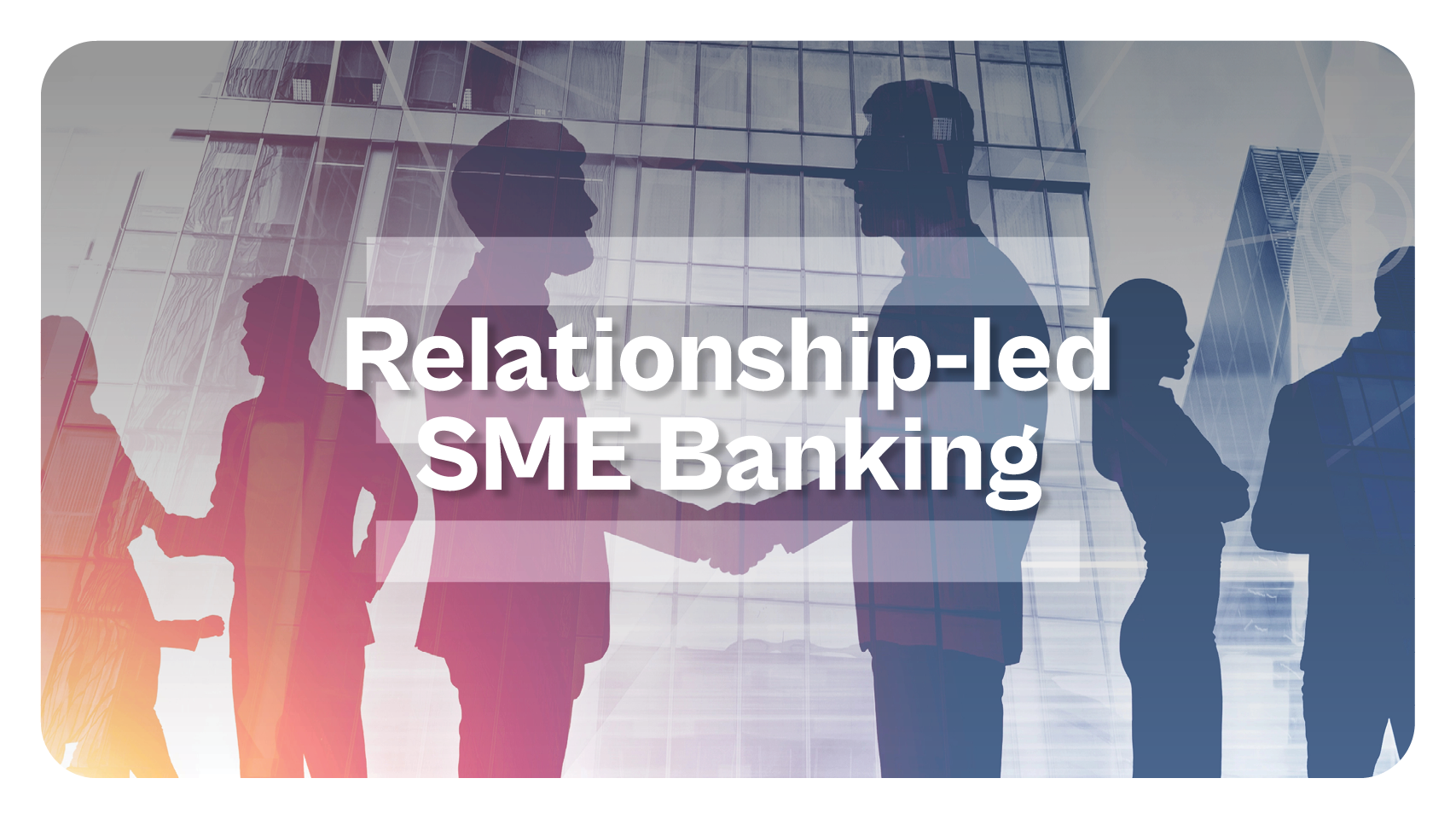
The Hidden Layer of Platform Banking: Why Vendor Ecosystems Are the Next SME Growth Engine

Platform banking is evolving fast, and today, US banks are embracing this digital transformation to meet SME customer expectations for speed, personalization, and convenience. But as digital platforms mature, one critical piece is still missing from most SME-focused strategies: a vendor enablement layer. A smart, scalable banking platform strategy for SME growth falls short if this layer is overlooked. Why?
Small and medium-sized enterprises (SMEs) require more than just loans or traditional banking services; they need support in managing their businesses, from tailored solutions and advice to risk management to cash flow analysis.
Integrating a tailored vendor ecosystem into your banking platform positions your institution as a trusted growth partner rather than merely a financial services provider, and helps you remain competitive amidst the increased competition in the banking industry driven by the rise of fintech companies.
While digital interfaces and mobile features are table stakes, what sets modern financial institutions apart is how they deliver real value, not just through financing, but through ongoing operational support. It's not about serving SMEs with the basics; it's about empowering SMEs to thrive.
From financial management tools to vendor enablement, this evolution of banking services must center on simplifying how SMEs run their businesses, manage cash flow, and access growth resources.
If your bank's platform strategy is still taking shape, start with our Platform Banking 101 guide.
The Gap Most Banks Don’t See: Lack of a Vendor Enablement Layer
Many US banks focus their platform investments on onboarding, mobile servicing, and digital lending. However, they overlook one of SMEs’ most pressing and practical needs: access to trusted service providers and operational enablers.
Most growing small and medium enterprises don’t view their bank as a daily partner because few banks have adapted their business models to meet operational needs beyond credit. But that’s changing.
SMEs expect and want more than financing, and this trend is becoming increasingly important in the world of SME banking. They're not just looking for capital. They want a partner who can offer proactive support, tailored financial advice, and digital tools that help them simplify financial management, manage credit risk, and support them as they run more efficient businesses.
From HR tools and tax compliance software to procurement platforms and logistics solutions, small businesses routinely struggle with vendor selection, vetting, and affordability.
This is especially true for first-time entrepreneurs and early-stage businesses. And it just so happens these are the segments most banks want to grow.
Meanwhile, banks already have the trust, the brand equity, and the data to step into this role. They regularly see where an SME is spending, growing, or struggling. But few are capitalizing on this visibility and leveraging data to deliver personalized banking services and real-time vendor support.
By embedding a curated ecosystem of pre-approved service providers into your digital platform, you help SMEs make better decisions faster, while also:
- Becoming a daily operations hub, not just a quarterly lending resource
- Reducing client churn by increasing platform stickiness
- Opening new monetization opportunities via partnerships and lead referrals
The result of ignoring this? Banks miss the chance to become indispensable. Instead, they stay perceived as transactional and interchangeable, regardless of how many digital capabilities they add on or how streamlined their lending process is.
What a Vendor Ecosystem Looks Like Inside a Banking Platform
A vendor ecosystem doesn’t replace your core services; it enhances them with a layer of ongoing relevance that deepens your value proposition and allows you to offer tailored solutions that enhance the customer experience. For banking executives used to measuring success in terms of deposits, loans, and products per customer, this might sound like a stretch, but it's not. It's an evolution, and it's one of the most innovative strategies you can implement.
SME clients often turn to Google or peers for essential vendors in areas like payroll, HR, marketing, IT, and compliance. These services affect their day-to-day operations far more frequently than their credit line.
Banks can bring structure, trust, and added value to this vendor discovery process by embedding a vendor marketplace directly into their digital platforms, amplifying operational efficiencies through a seamless digital experience and a customer-centric approach.
Here’s what this looks like in practice:
- A white-labeled vendor marketplace, accessible from within your SME dashboard, aligned with your branding, and integrated into the client journey.
- Pre-vetted service providers, segmented by business type or maturity, ensuring quality and reducing reputational risk.
- Exclusive SME discounts or perks, negotiated by the bank to offer tangible value and cost savings to customers.
- Smart recommendations, dynamically served based on business lifecycle, transaction behavior, or previous platform interactions.
- Engagement analytics that help your product and relationship teams understand what services your clients actually use, value, and need next.
Imagine a newly onboarded local retail startup logging into your banking platform and being greeted not only with account balances and loan offers, but also with a curated list of trusted point-of-sale vendors, e-commerce consultants, and shipping providers, all tailored to their segment and location. With real-time insights from their platform use, the recommendations become more relevant over time, adding even more value.
💡 Banks that offer vendor ecosystems are no longer seen as just finance providers—they become an indispensable node in the SME’s operating system, helping them clearly stand out from other providers.

Why Building This from Scratch Internally Is Expensive, Risky, and Slow
Many banks assume they can build this functionality in-house but underestimate the cost, scope, and internal lift required to do it well.
What seems like "just another feature" quickly snowballs into a full product requiring continuous governance, technical upkeep, and operational resourcing.
Consider the practical realities:
- Vendor vetting isn’t a one-time checklist. It’s a legal and compliance-driven workflow requiring background checks, contract reviews, and risk assessments. Every vendor you onboard is an extension of your brand and liability.
- UX/UI development needs to match or exceed your existing platform standards. Poor design leads to abandonment, support tickets, and brand friction. Building a vendor discovery and recommendation layer that feels intuitive and valuable takes product strategy, design research, and iteration.
- Ongoing vendor management is often forgotten. Vendors change terms, update offerings, go out of business, or fail compliance checks. Someone has to manage all of this or risk exposing your clients to outdated, inaccurate, or even harmful referrals.
- Integration and data governance introduces another layer of complexity. You’ll need to decide where the vendor data lives, how it’s accessed, and how it’s tracked while ensuring it aligns with your internal systems, analytics frameworks, and regulatory policies.
Meanwhile, the internal product and innovation teams responsible for executing these builds are likely:
- Already prioritizing mobile upgrades, core modernization, compliance deadlines, or user authentication improvements
- Limited in bandwidth to support MVPs, let alone ongoing platform layers
The longer it takes to launch, and the more fragmented the internal build becomes, the greater the risk of fintech challengers stepping in with plug-and-play ecosystems that your SME clients adopt first.
Want to avoid the trial and error phase and go straight to a streamlined vendor marketplace solution? Learn what's possible here.
Buying vs. Building: A Strategic Case for Partnering
Partnering with a platform-ready vendor management solution is no longer just a tactical shortcut. It’s a strategic imperative for banks aiming to lead in the SME space. While building internally may feel like a way to retain control, it comes at a steep cost in terms of time, technical debt, and missed opportunity.
Vendor ecosystem platforms are now purpose-built for integration with banking platforms, offering banks a mature, secure, and rapidly deployable solution. With a plug-and-play model, your bank can:
- Go live in weeks, accelerating time-to-impact and beating competitors to market.
- Customize the experience with your branding, business rules, and preferred vendor relationships.
- Embed the ecosystem inside your existing SME dashboards, mobile apps, or portals without disrupting core systems.
- Track usage and preferences in real time to uncover which vendors and services your SME clients value most.
- Demonstrate compliance readiness with built-in workflows for vendor vetting, data protection, and audit trails.
Beyond ease of deployment, the strategic benefit lies in extending your platform’s value proposition without inflating your tech or compliance footprint. Banks that buy into a turnkey solution reduce risk exposure, and gain immediate access to innovations developed by specialists in vendor enablement.
You don’t have to build the entire platform—just plug in the right piece, and get to market with more speed, confidence, and value for your SME clients.
Banks that embed a vendor ecosystem into their SME platforms can expect measurable performance improvements across key client engagement and retention metrics. This isn’t theoretical; it’s already being seen by institutions that have implemented modular platform enhancements.
- Increase SME portal usage by 20–40% by offering practical, daily-use functionality beyond balances and transfers.
- Improve digital engagement through personalized vendor recommendations and business-specific service bundles.
- Generate new leads and upsell opportunities as clients stay longer in the platform and signal intent through vendor interactions.
- Strengthen retention by integrating services that tie into business workflows, reducing the likelihood of switching.
In real terms, this means an SME that once logged in once a month to check balances now returns weekly to manage operations, explore service offers, and access partner discounts. Relationship managers get more visibility into what SMEs care about and can proactively offer relevant financial products when needs emerge.
The real win? Becoming the go-to business partner for your SME clients not only for financial needs but also for operational growth support.
Conclusion
For banks committed to innovation and long-term SME growth through sustainable finance solutions, integrating a vendor ecosystem isn't just a nice-to-have; it's a strategic leap forward. It transforms the bank's role from transactional provider to embedded business partner, delivering meaningful daily utility to SME customers and providing SMEs with the tools they need to thrive.
By offering integrated vendor and financial management tools directly within your platform, your institution strengthens its ability to:
- Build deeper, stickier relationships with SME clients
- Reduce credit risk through improved visibility into client operations
- Offer tailored financial advice based on real-time business needs
- Differentiate from competitors with a more holistic value proposition
Not only do you increase customer satisfaction and retain your customer base more effectively, but you also address the growing demand for personalized experiences and stand out from other financial institutions. Plus, you're leveraging data analytics and data-driven insights efficiently, while other financial providers are wasting time chasing vanity tech.
If your bank is already investing in platform transformation, embedding a vendor layer is one of the most strategic, high-leverage moves you can make.
Our vendor management platform is purpose-built for financial institutions looking to:
- Curate and embed high-quality vendor options for SME clients
- Offer exclusive partner discounts and value-added services
- Stay compliant with built-in governance and risk tools
- Gain actionable insight into SME needs and behaviors
Ready to see what this looks like inside your platform? Try Proven for Free.












